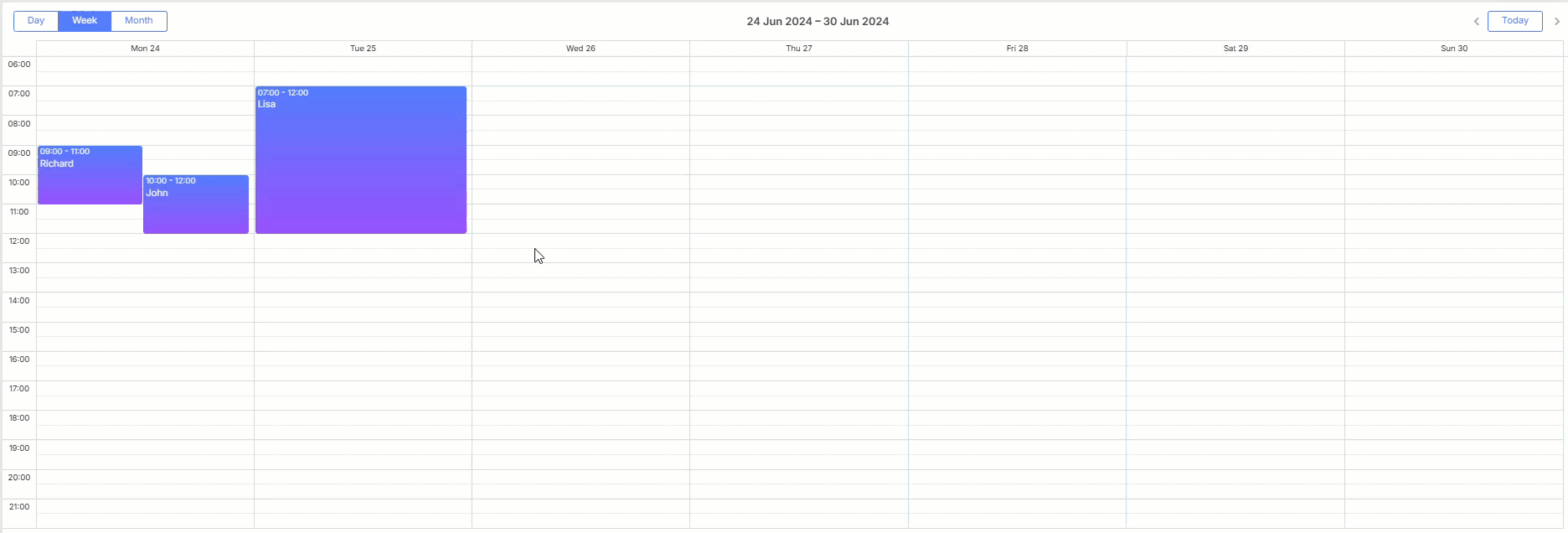在 Vue 中使用 dayjs 处理时区,可以通过安装并配置 dayjs 的时区插件来实现。以下是一个完整的示例,展示如何在 Vue 应用中使用 dayjs 进行时区处理。
步骤 1: 安装 dayjs
如果还没有安装 dayjs,可以使用 npm 安装:
npm install dayjs
步骤 2: 配置 dayjs 和时区插件
在 Vue 组件中,可以导入 dayjs 和所需的插件,并进行配置。以下是一个示例组件:
<template>
<div>
<h1>时间处理示例</h1>
<p>输入时间: {{ timeString }}</p>
<p>处理后的时间: {{ processedTime }}</p>
</div>
</template>
<script>
import dayjs from 'dayjs';
import utc from 'dayjs/plugin/utc';
import timezone from 'dayjs/plugin/timezone';
dayjs.extend(utc);
dayjs.extend(timezone);
export default {
data() {
return {
timeString: '2024-10-08 10:27:24',
timeZone: '', // 可以是 'GMT' 或者 ''
};
},
computed: {
processedTime() {
if (!this.timeZone) {
// 使用输入字符串的年月日,填充当前时分秒
const currentTime = dayjs();
return dayjs(`${dayjs(this.timeString).format('YYYY-MM-DD')} ${currentTime.format('HH:mm:ss')}`).format('YYYY-MM-DD HH:mm:ss');
} else if (this.timeZone === 'GMT') {
// 如果时区为 GMT,进行换算
return dayjs.utc(this.timeString).tz('GMT').format('YYYY-MM-DD HH:mm:ss');
}
return '';
},
},
};
</script>
<style scoped>
h1 {
font-size: 24px;
}
</style>
代码说明
- 导入
dayjs和插件:在组件中导入dayjs及其 UTC 和时区插件,并进行扩展。 - 数据属性:
timeString: 输入的时间字符串。timeZone: 时区字段,可以是'GMT'或者空字符串。
- 计算属性
processedTime:- 如果
timeZone为空,使用输入字符串的年月日,结合当前时间的时分秒。 - 如果
timeZone为'GMT',使用dayjs.utc()进行转换。
- 如果
- 模板:展示输入的时间和处理后的时间。
使用示例
将上述代码放入 Vue 组件中,可以根据需要调整 timeString 和 timeZone 的值,看到相应的处理结果。
注意事项
- 确保在 Vue 项目中正确安装并配置
dayjs。 - 根据需要调整时间格式和输出方式。



















